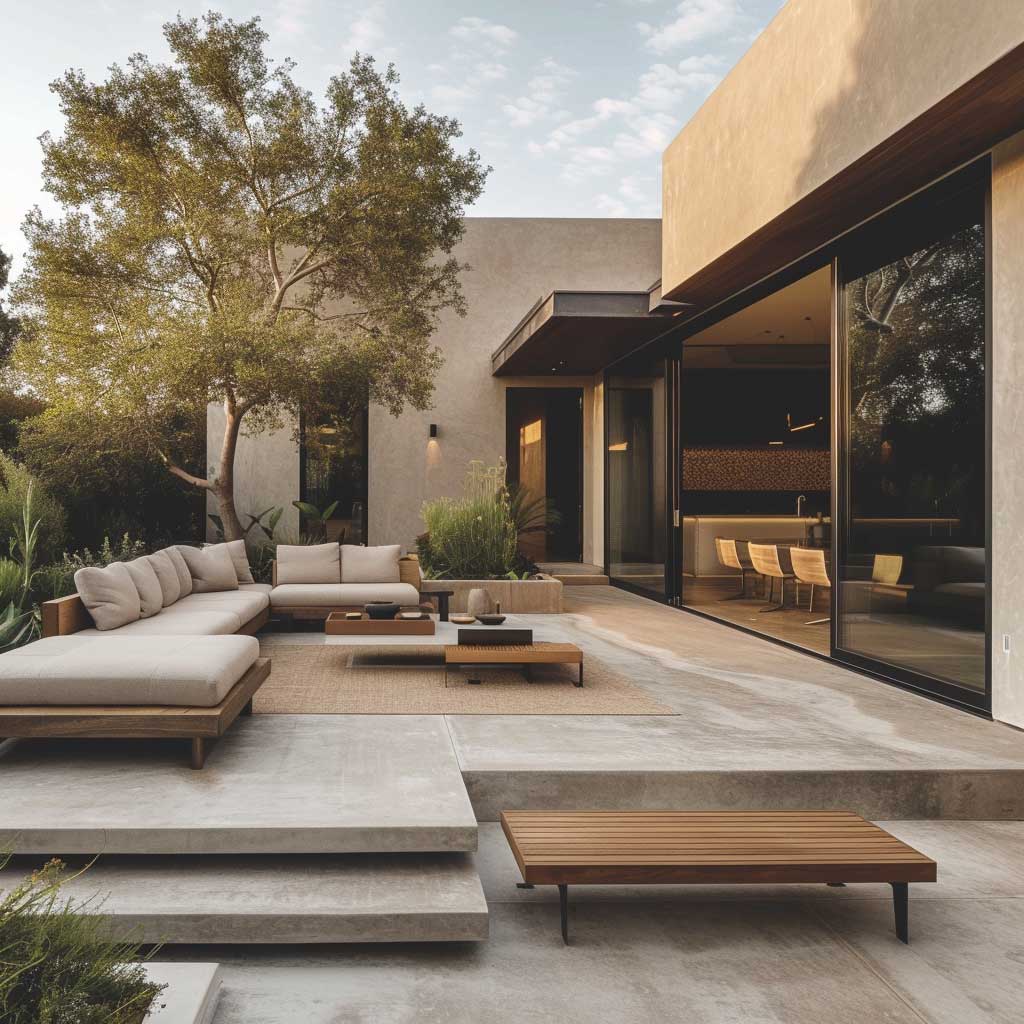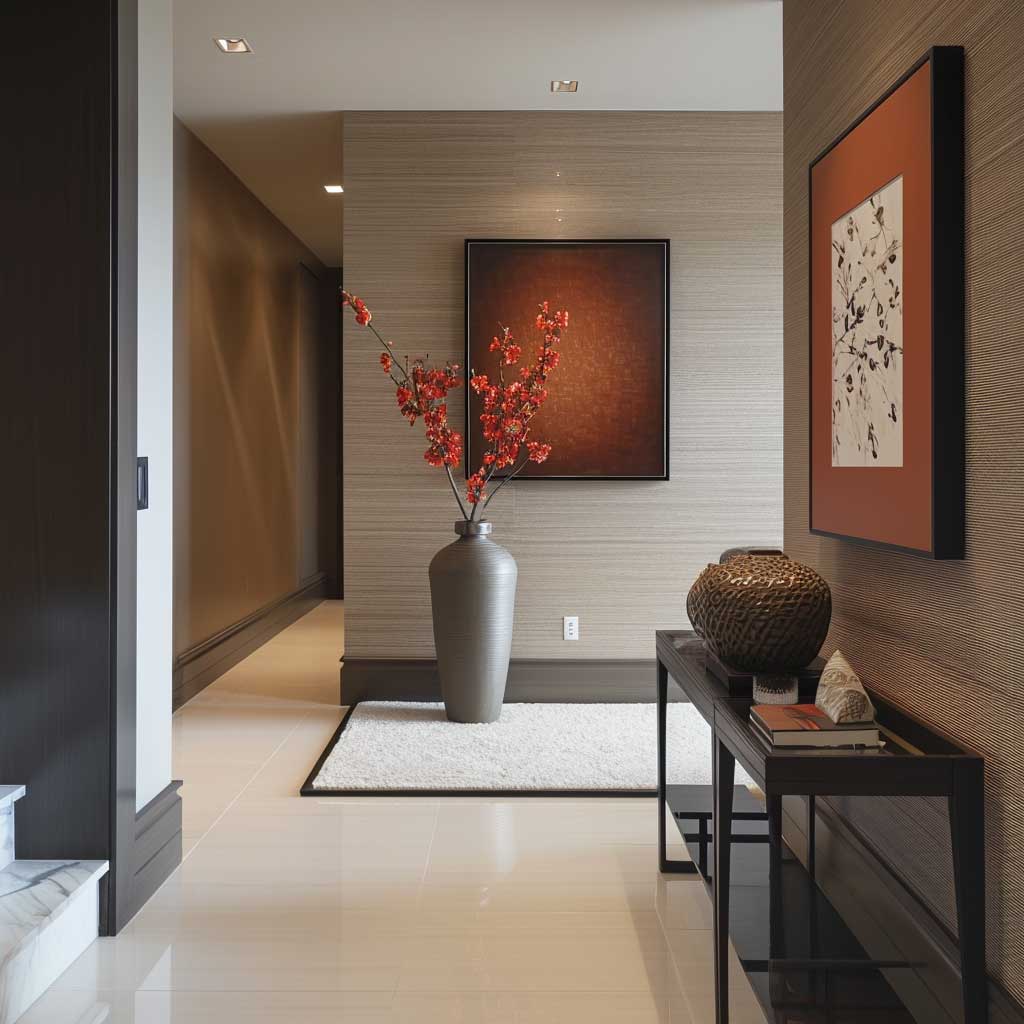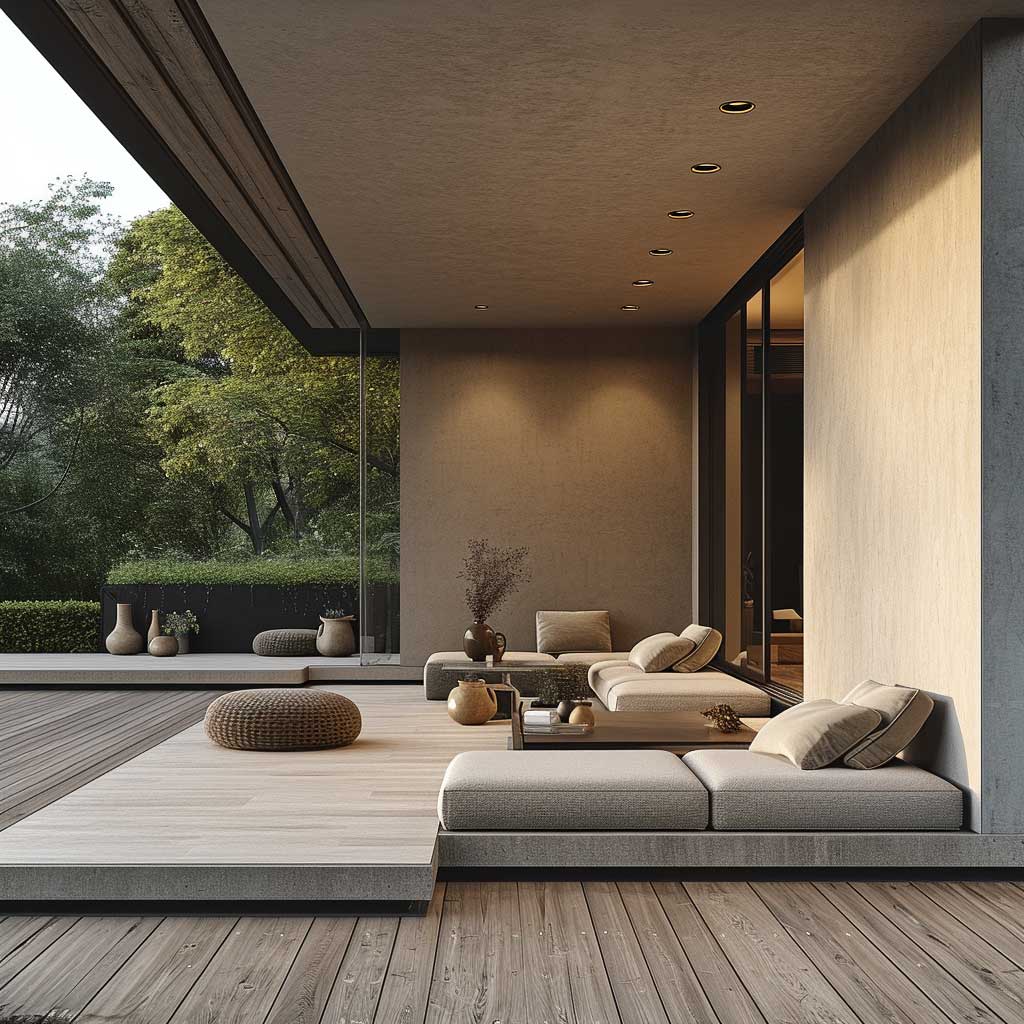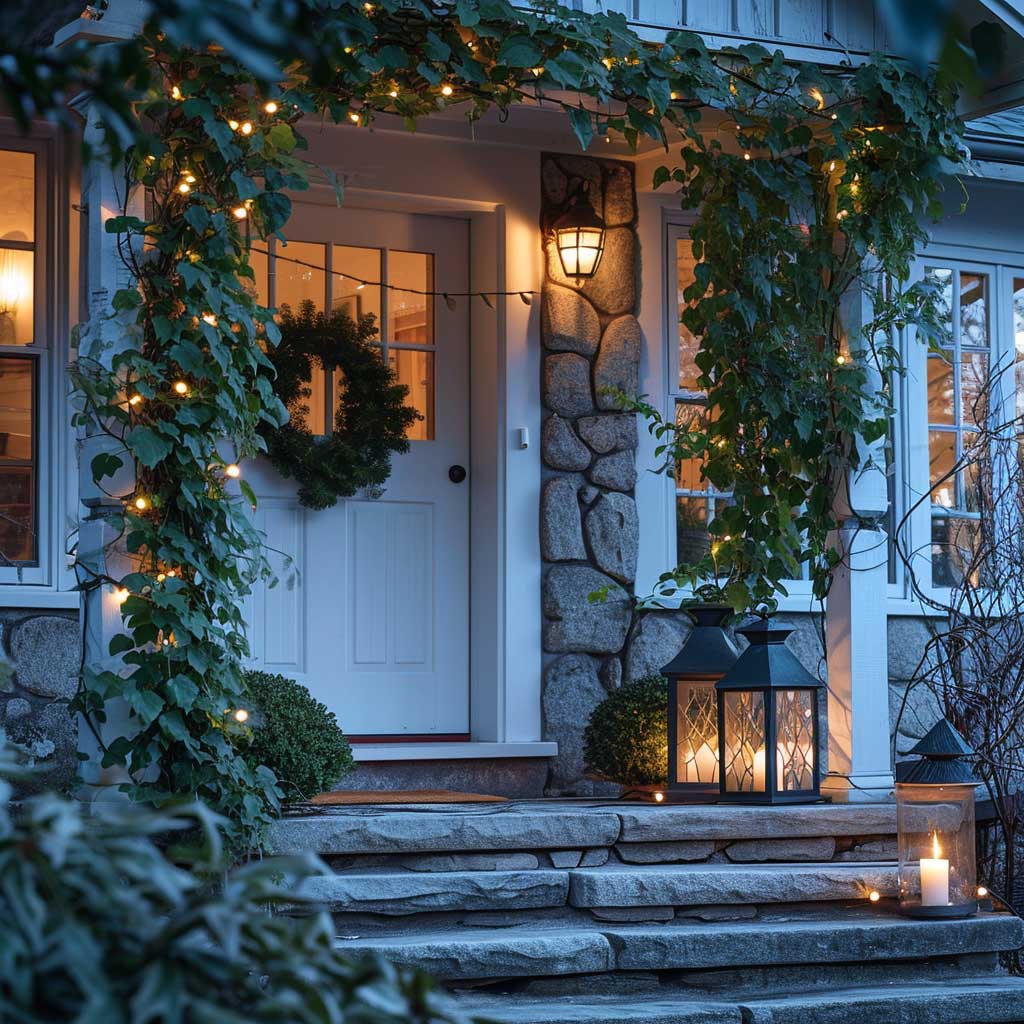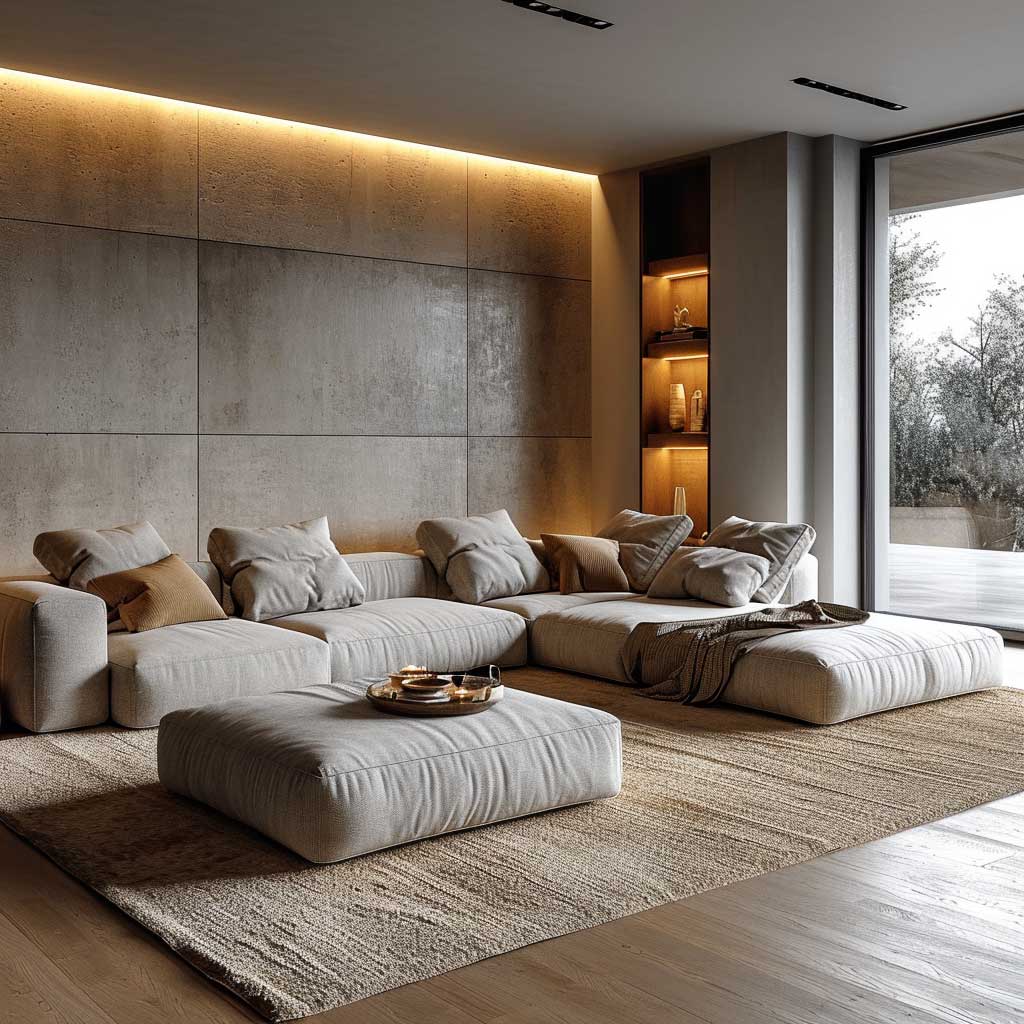In the ever-evolving landscape of interior design, the power of simple room colour designs stands as a testament to the beauty of minimalism and the impact of thoughtful color choices. Modern living spaces, characterized by their clean lines and uncluttered aesthetics, find their perfect complement in color schemes that emphasize simplicity and elegance. These designs not only enhance the visual appeal of a room but also contribute to a sense of calm and well-being, proving that sometimes, less really is more. By focusing on a carefully curated palette, homeowners can transform their spaces into modern havens of style and tranquility.
Serene Minimalist Bedroom Bliss
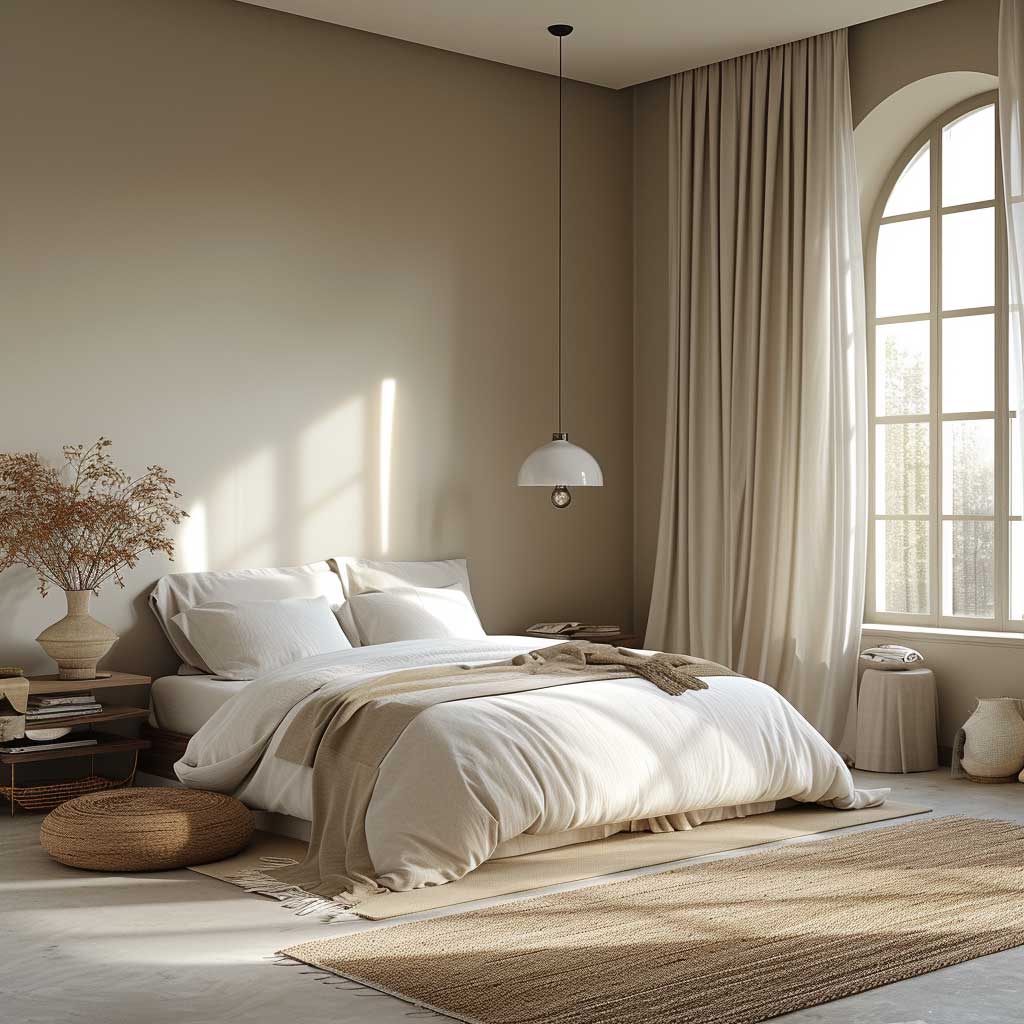
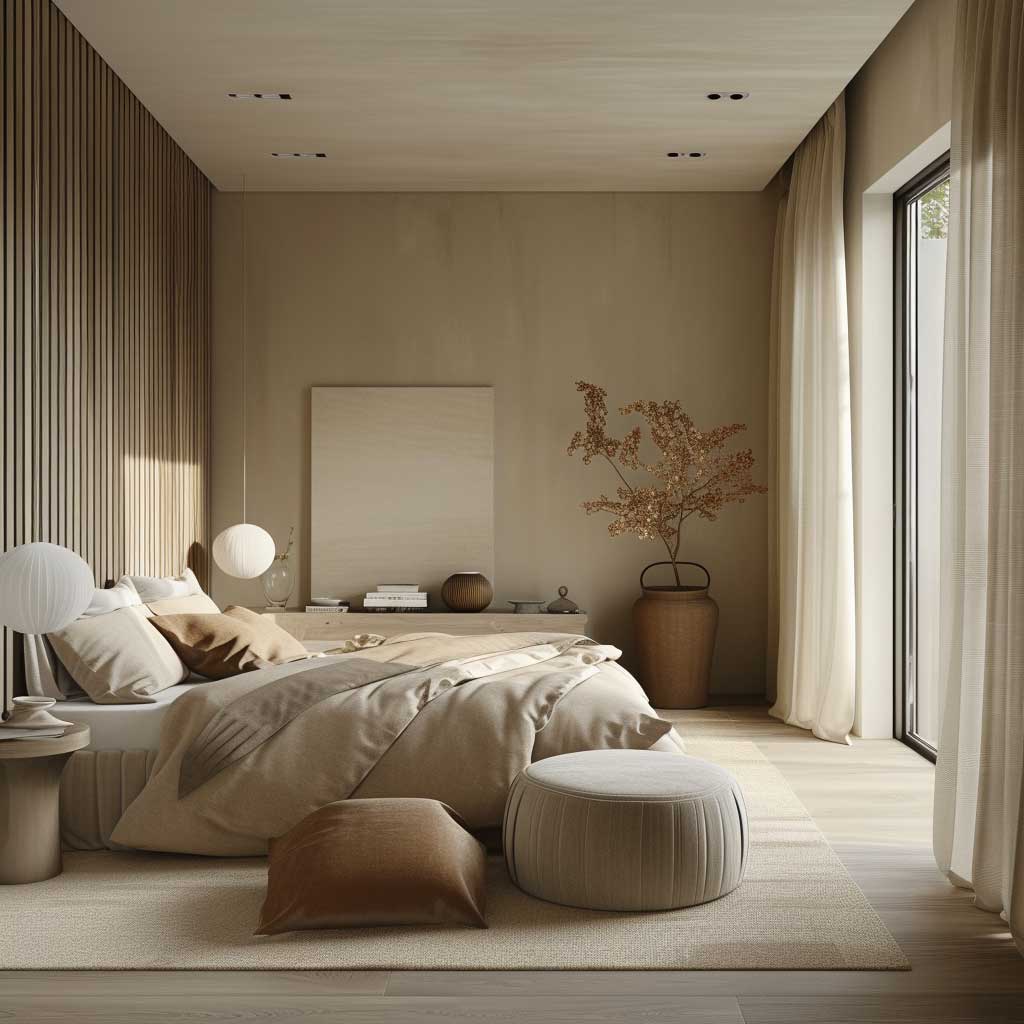
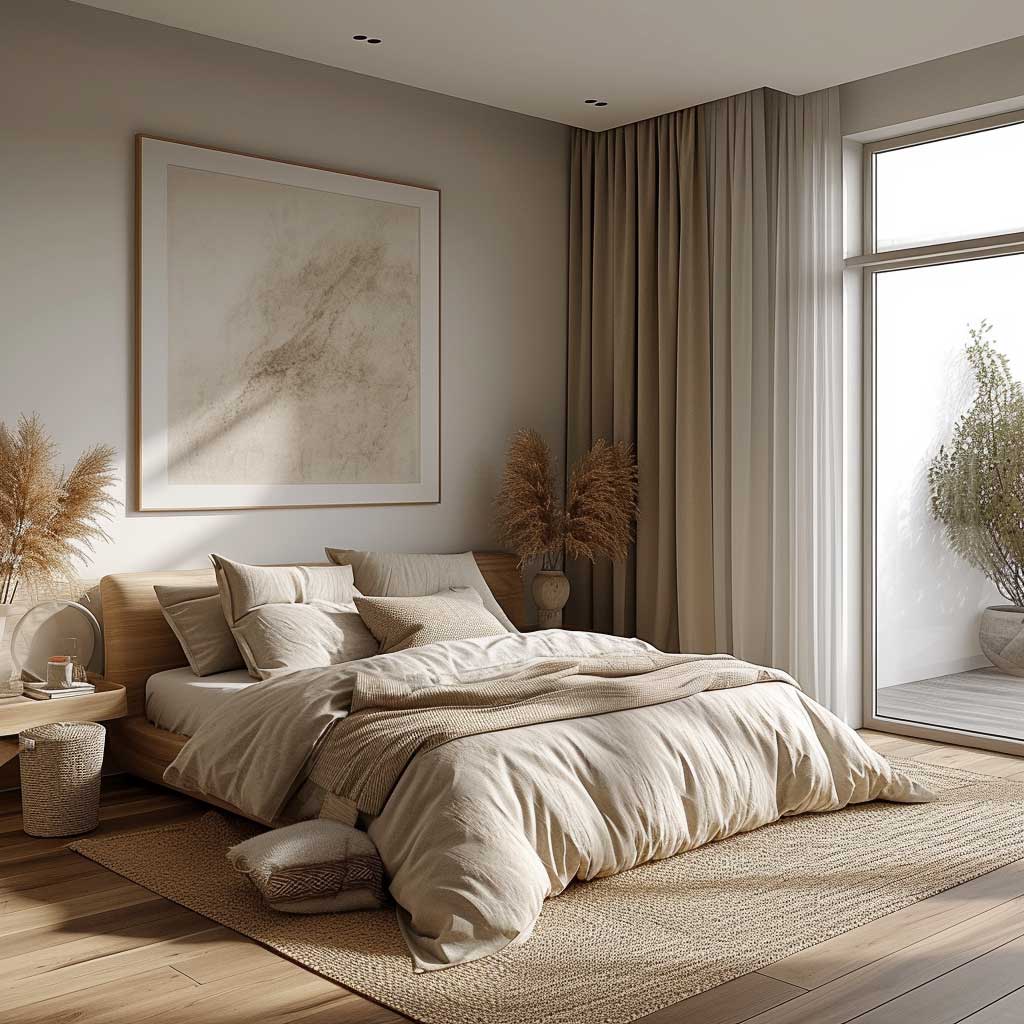

In the heart of a home designed with mindfulness at its core, the bedroom emerges as a sanctuary, a retreat from the outside world’s hustle and bustle. The concept of “Serene Minimalist Bedroom Bliss” encapsulates a design philosophy that prioritizes tranquility, space, and the subtle power of simplicity in room color design. This approach to interior design uses minimalism not just as a style but as a pathway to enhance well-being and peace through carefully chosen colors and textures.
The foundation of creating a serene minimalist bedroom lies in the selection of a color palette that embodies calm and simplicity. Soft, muted tones like cool blues, gentle greys, and warm whites are often chosen for their ability to soothe the senses and invite a sense of peace and spaciousness. These colors, when applied to walls, bedding, and furnishings, create a cohesive look that emphasizes cleanliness and order, key tenets of the minimalist aesthetic.
One might wonder, why do these particular colors promote a sense of tranquility? The answer lies in the psychology of color. Cool blues are reminiscent of the sky and sea, evoking a sense of openness and calm. Gentle greys serve as a neutral backdrop, offering a balance between warmth and coolness, while warm whites inspire thoughts of purity and simplicity. Together, these colors create a visual harmony that encourages relaxation and introspection, making the bedroom a true place of refuge.
In a serene minimalist bedroom, every element is intentional, from the streamlined bed frame to the unadorned windows that allow natural light to fill the space. The absence of clutter and unnecessary decorations underscores the minimalist ethos, where less is indeed more. This simplicity in room color design and decor does not equate to a lack of personality or warmth; rather, it offers a different kind of richness, one that is found in the textures of the materials used and the quality of the craftsmanship.
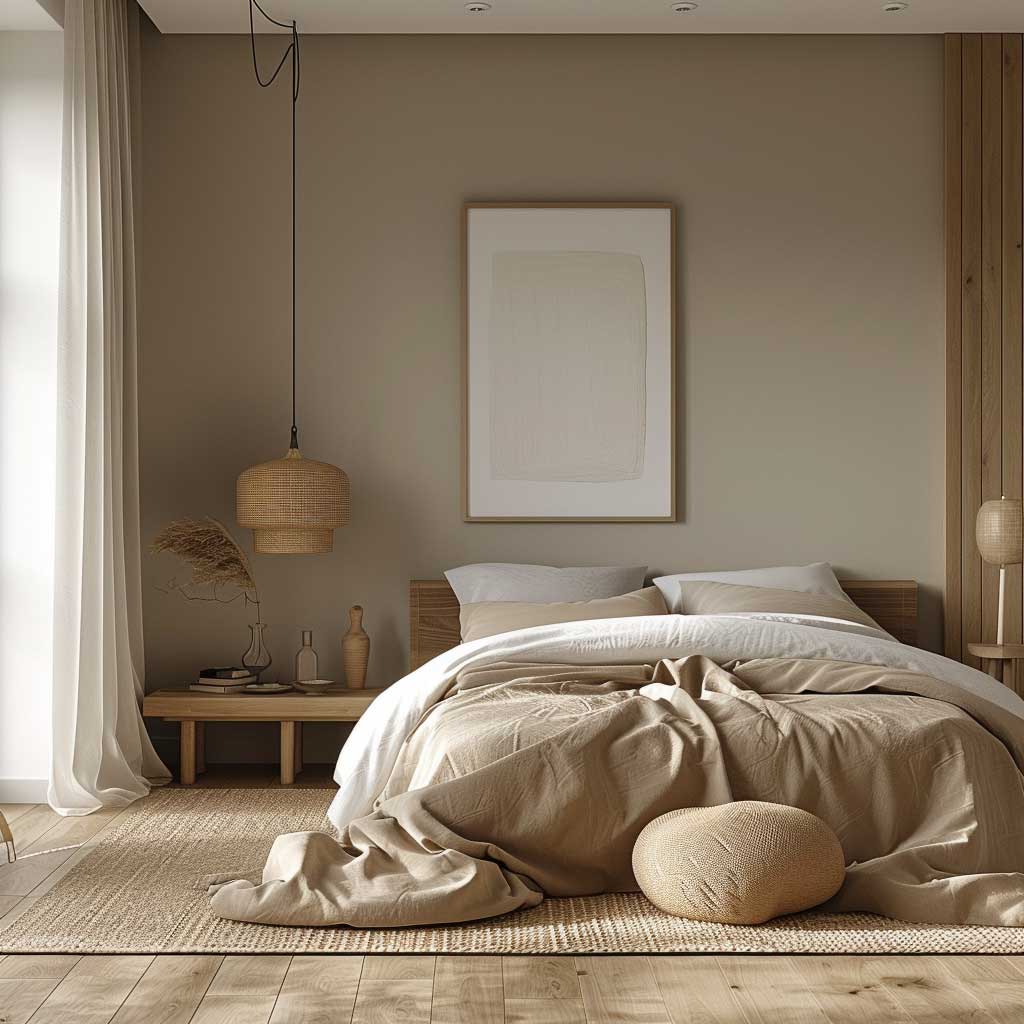
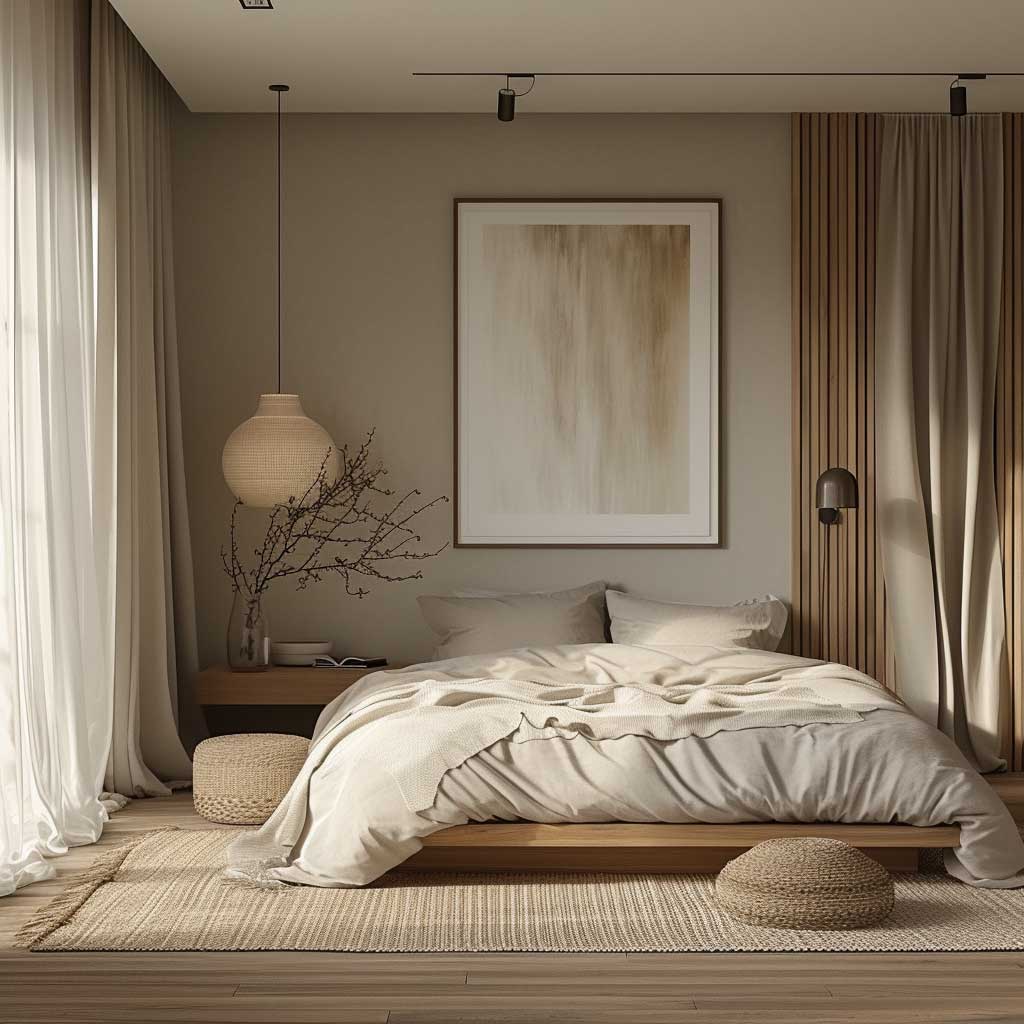

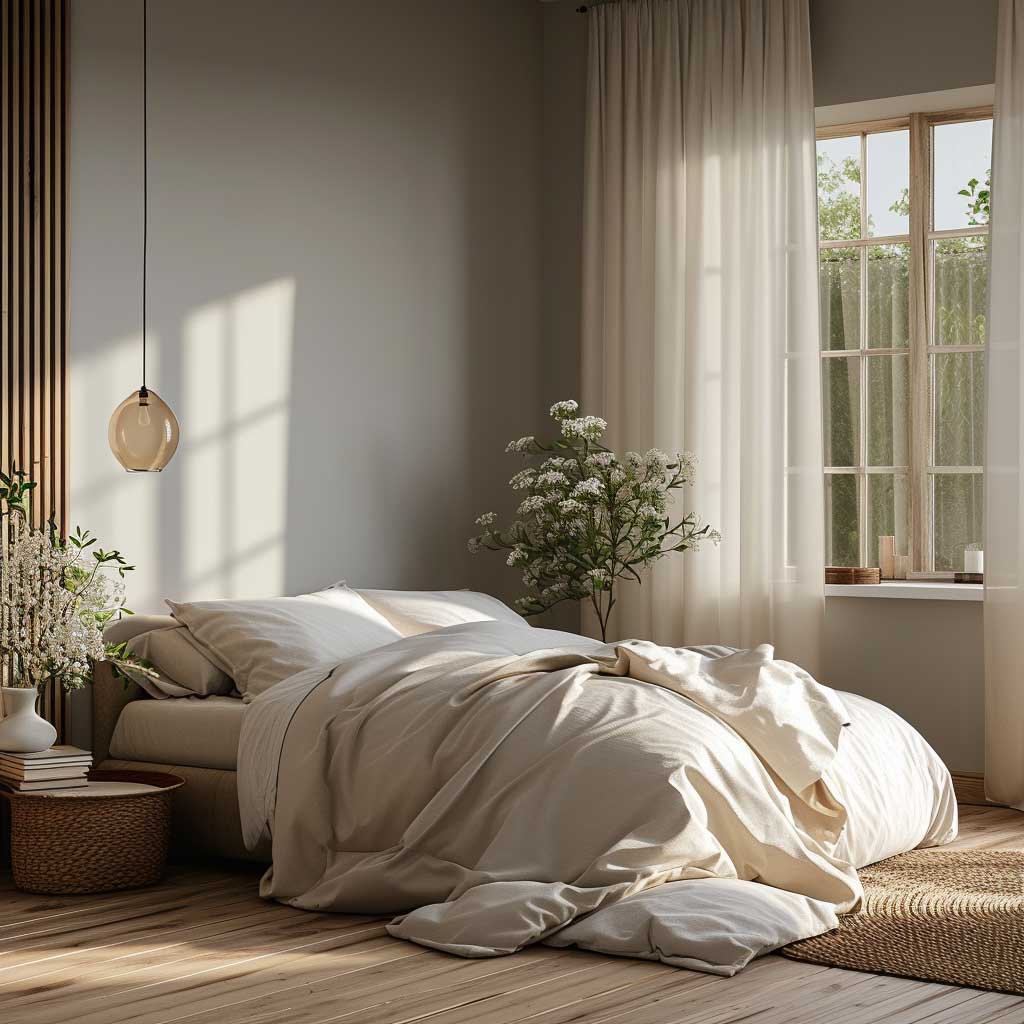
The strategic use of texture plays a crucial role in adding depth and interest to the minimalist bedroom. Soft linens, plush wool rugs, and smooth wooden surfaces provide tactile diversity, ensuring the room feels inviting and comfortable. These textures, combined with the simple room color design, contribute to the overall ambiance of calm and bliss.
Lighting, both natural and artificial, is carefully considered to enhance the serene atmosphere. During the day, large windows invite sunlight, subtly changing the room’s mood as the day progresses. At night, soft, diffused lighting sources maintain the tranquil vibe, allowing for relaxation and preparation for sleep. The interplay of light and shadow adds a dynamic quality to the space, highlighting the simplicity and beauty of the color design.
Creating a serene minimalist bedroom is an exercise in restraint, reflection, and understanding of one’s personal needs for peace and tranquility. It’s about making conscious choices in color, furniture, and layout that align with the principles of minimalism and the goal of creating a blissful retreat. This approach to room color design simple yet profound, offers a blueprint for transforming a bedroom into a space that not only looks beautiful but also feels deeply restorative.
In essence, the serene minimalist bedroom stands as a testament to the power of simple room color design in modern living. It showcases how, with thoughtful selection of hues and a commitment to minimalism, a bedroom can become a haven of bliss and tranquility. Through the careful curating of colors, textures, and light, the minimalist bedroom transcends mere aesthetics to become a space where serenity is both a design principle and a way of life.
Bright and Airy Living Room Elegance

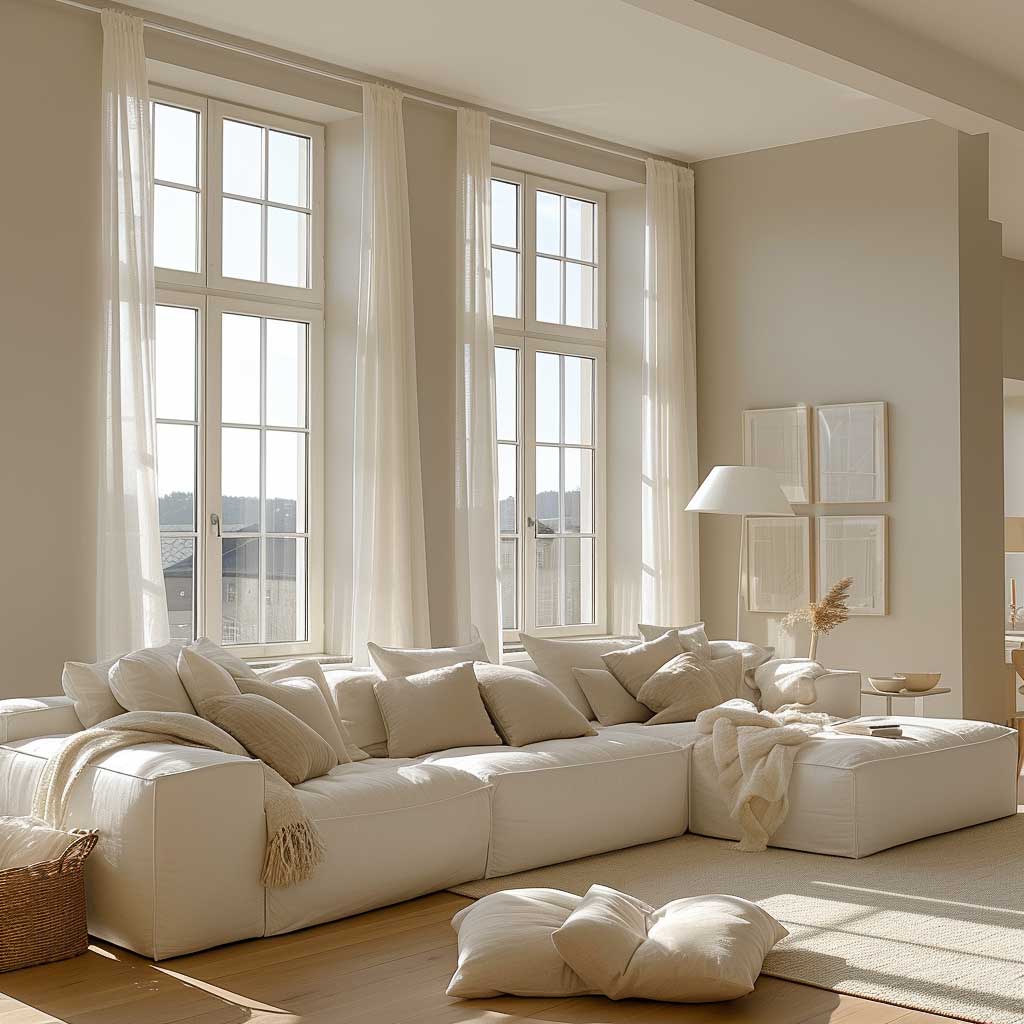
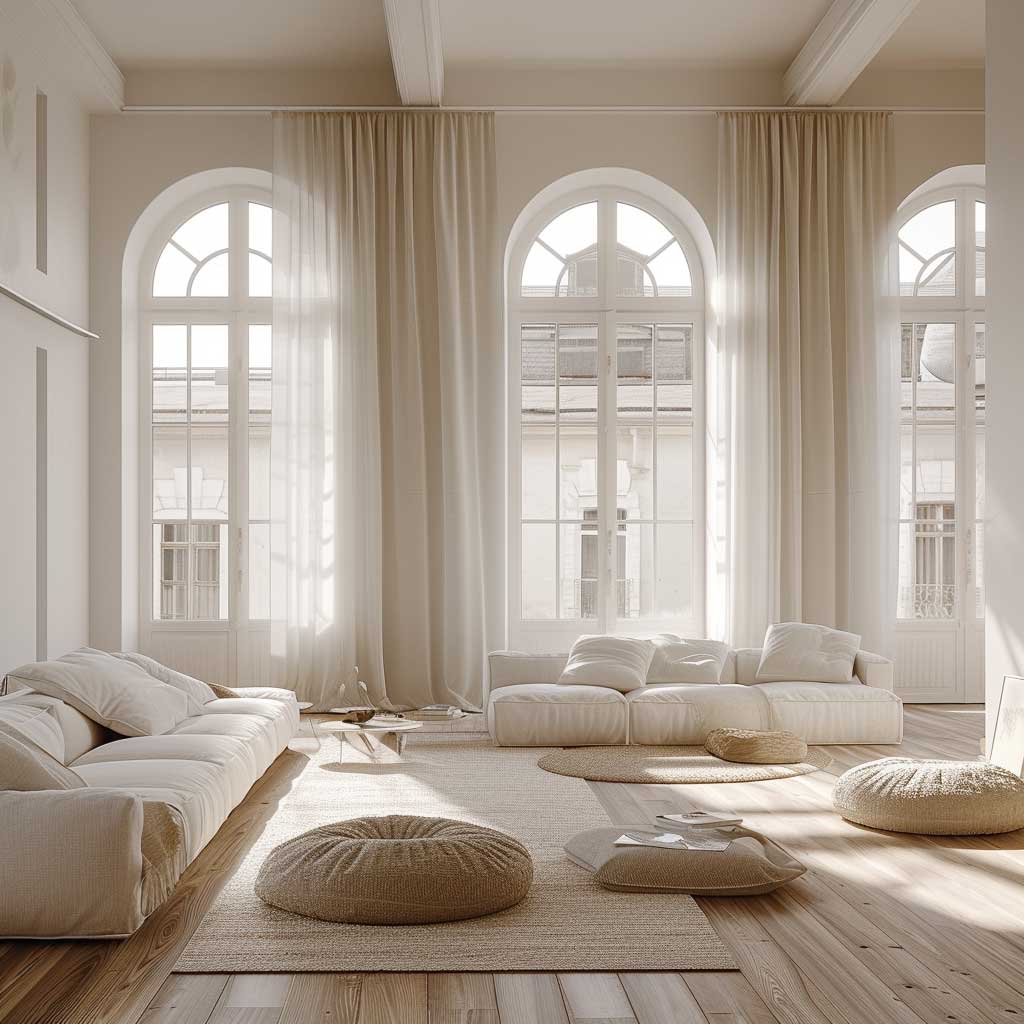
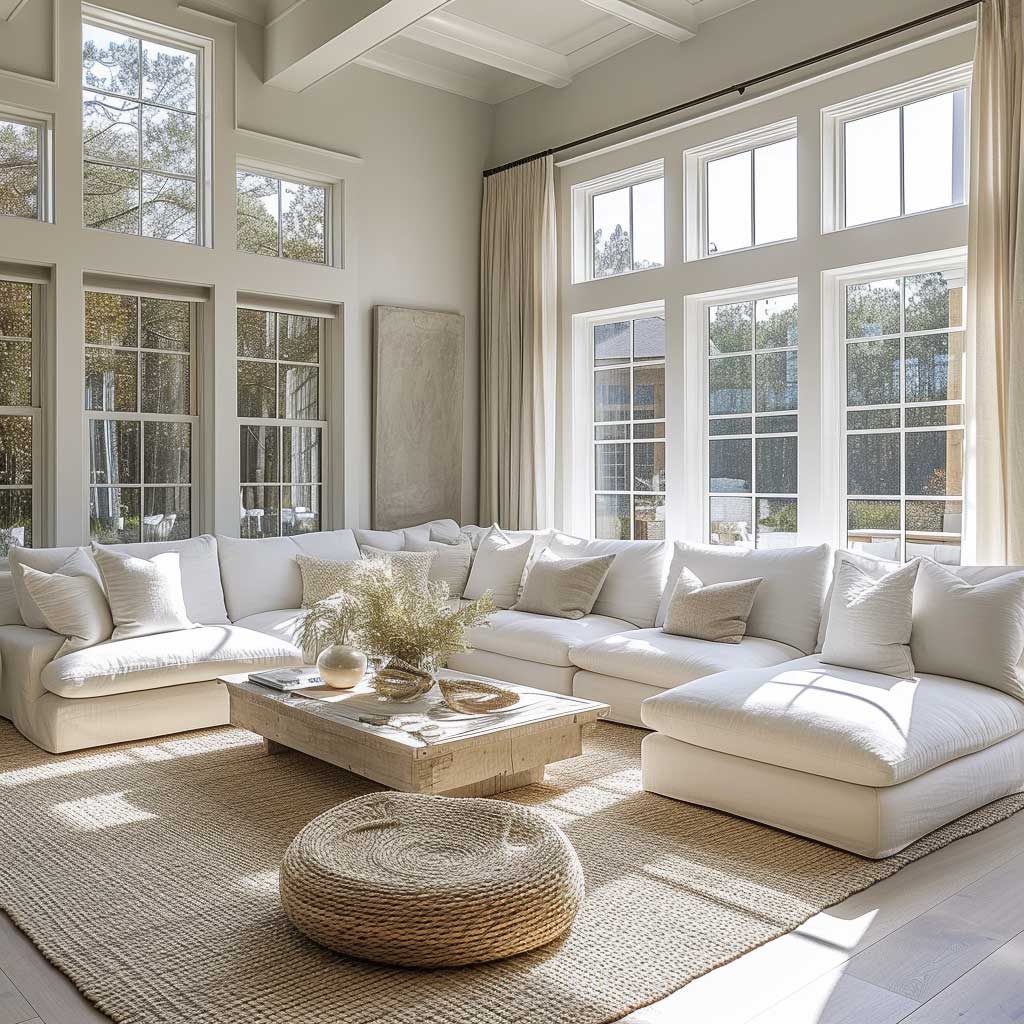
The essence of creating a bright and airy living room lies in the masterful use of simple room color design to achieve an environment that feels both expansive and inviting. This design approach, focusing on elegance through minimalism, leverages light and space as its primary tools, transforming the living room into a hub of tranquility and social connection. The adoption of a carefully selected color palette not only illuminates the living area but also establishes a foundation for a space that embodies contemporary grace and comfort.
Central to achieving this elegance is the selection of a color scheme that maximizes natural light and enhances the sense of openness. Soft whites, subtle beiges, and pale grays are commonly chosen for their reflective qualities and their ability to create a seamless transition between the living room and the world outside. These hues, when applied to walls, ceilings, and even large furniture pieces, serve to blur the boundaries of the room, making the space feel larger and more welcoming.
The impact of these colors is significantly heightened by the presence of natural light. Large windows, possibly adorned with sheer curtains or left unadorned, become vital elements in the bright and airy living room, inviting the sky and landscape into the home. The interplay between the simple room color design and the changing light throughout the day adds a dynamic and organic layer to the living room’s ambiance, ensuring the space feels alive and connected to the rhythms of the natural world.
Furniture and decor in such a living room are chosen with an emphasis on simplicity and functionality, echoing the minimalist ethos that underpins the entire design. Sleek lines, unobtrusive shapes, and a preference for materials that complement the color palette—such as light wood, glass, and metal—maintain the room’s airy feel. The arrangement of furniture is deliberate, promoting ease of movement and interaction, while also allowing each piece to “breathe” within the space.
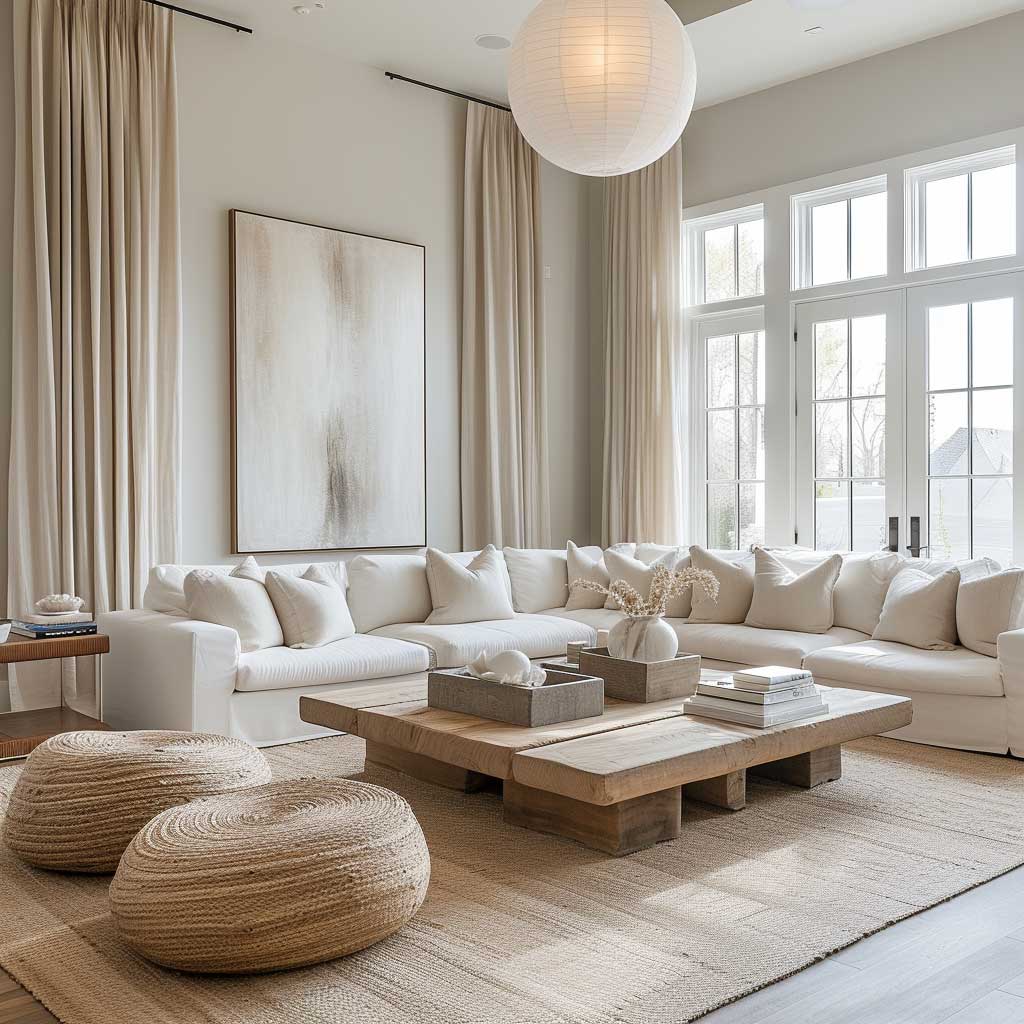



In a living room where simplicity in color and design reigns, texture becomes an essential tool for adding depth and interest. Textural contrasts, from the softness of plush rugs to the smoothness of leather chairs or the roughness of woven baskets, introduce a tactile dimension that enriches the visual experience without cluttering the space. These textures, while subtle, play a critical role in making the living room feel cozy and lived-in, balancing the sleekness of the minimalist design with a touch of warmth and personality.
Accessories, though minimal, are carefully selected to complement the room’s color scheme and overall aesthetic. Artwork, cushions, and decorative objects in accent colors or with interesting patterns can inject personality into the living room, acting as focal points that draw the eye and spark conversation. However, the key is restraint; each item must serve a purpose, either functional or aesthetic, ensuring the space remains uncluttered and true to its bright and airy ethos.
Creating a bright and airy living room through simple room color design is a testament to the power of minimalism in modern interior design. This approach not only enhances the physical space but also elevates the living experience, offering a sanctuary of light and elegance. By carefully balancing color, light, texture, and form, homeowners can craft living spaces that are not just places to reside but also environments that inspire and rejuvenate, embodying the very essence of modern living.
Chic Monochrome Kitchen Harmony



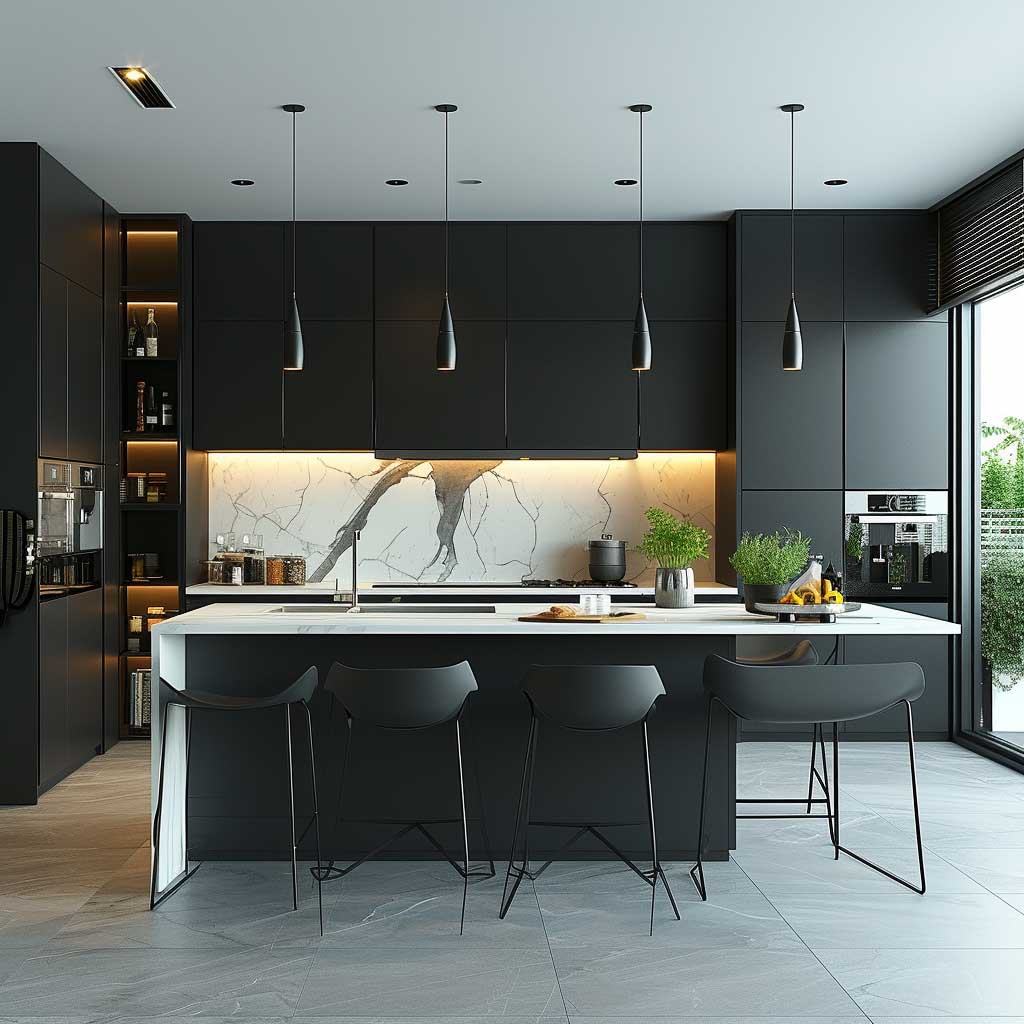
The allure of a chic monochrome kitchen lies in its sophisticated simplicity and harmonious balance between light and shadow. This design approach, centered around a simple room color design, transforms the kitchen—a space traditionally bustling with activity—into a modern, stylish, and cohesive area. The monochrome palette, often consisting of blacks, whites, and grays, serves not just as a backdrop but as a statement of elegance and timeless style. It speaks to a refined taste where every element is carefully considered to create a space that is both functional and visually striking.
In crafting a chic monochrome kitchen, the selection of colors is paramount. The design leans heavily on shades of black and white, with gray acting as a mediator that softens the contrast and adds depth. The beauty of this palette lies in its versatility; it can adapt to any style, from the sleek and modern to the classic and traditional. The key is in the balance—too much black can make the space feel smaller and closed in, while an excess of white might seem stark or sterile. The successful monochrome kitchen finds equilibrium, using these colors to define spaces, highlight architectural features, or create focal points.
Cabinetry in a monochrome kitchen often becomes the centerpiece of the design. Whether opting for glossy black cabinets that reflect light and add a touch of luxury, or matte white cabinets that brighten the space and evoke a sense of cleanliness, the choice dramatically influences the room’s ambiance. The simplicity of the color scheme allows for experimentation with textures and finishes, enabling designers to add complexity and interest without introducing additional colors. Hardware, too, plays a crucial role, with metals like stainless steel, chrome, or matte black providing subtle yet impactful accents that complement the monochrome theme.
The countertops and backsplash in a monochrome kitchen offer additional opportunities to explore the nuances of this color scheme. Materials like marble, quartz, or granite, with their natural veining, can introduce texture and movement into the space, breaking up the solidity of the color blocks. For those seeking a more uniform look, solid-colored countertops and backsplashes in black or white can enhance the kitchen’s sleek, minimalist aesthetic. Lighting, both natural and artificial, becomes crucial in such environments, highlighting textures and surfaces while providing adequate illumination for culinary tasks.




Flooring choices also contribute to the kitchen’s overall harmony. In a monochrome setting, floors can either anchor the space with darker hues or lift it with lighter tones. The choice depends on the desired contrast level and the room’s natural light availability. Flooring materials vary from polished concrete for an industrial edge to classic hardwood for warmth or even geometric tile patterns for a hint of playfulness within the strict color palette.
Creating a chic monochrome kitchen is not merely about adhering to a black-and-white color scheme; it’s about crafting a space that balances functionality with aesthetics. It’s where the simplicity of the palette amplifies the beauty of design details, textures, and materials, making the kitchen not just a place for cooking but a masterpiece of interior design. This approach to room color design, rooted in simplicity, showcases how a restrained use of color can lead to a space that is both timeless and unmistakably modern.
The journey through simple room colour designs reveals a world where colour becomes a powerful tool in crafting spaces that are not only visually stunning but also emotionally resonant. Modern living spaces, with their emphasis on minimalism and functionality, are the ideal canvas for these colour schemes, allowing the inherent beauty and simplicity of the design to shine through. By choosing colours that evoke tranquility, spaciousness, and elegance, homeowners can create interiors that are both timeless and reflective of contemporary life, proving that in the realm of interior design, simplicity can indeed lead to sophistication.

